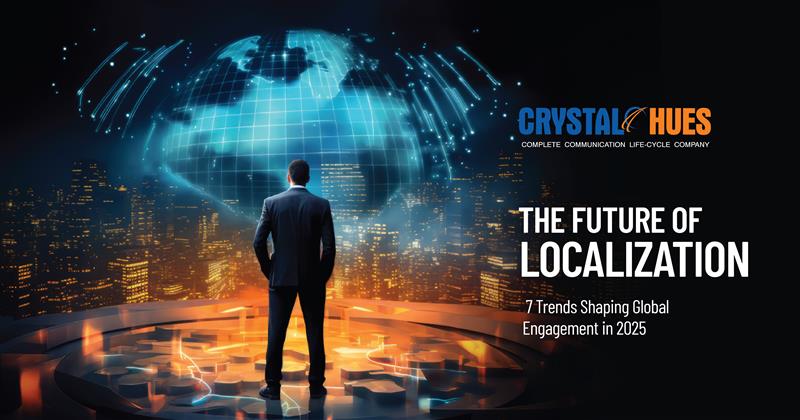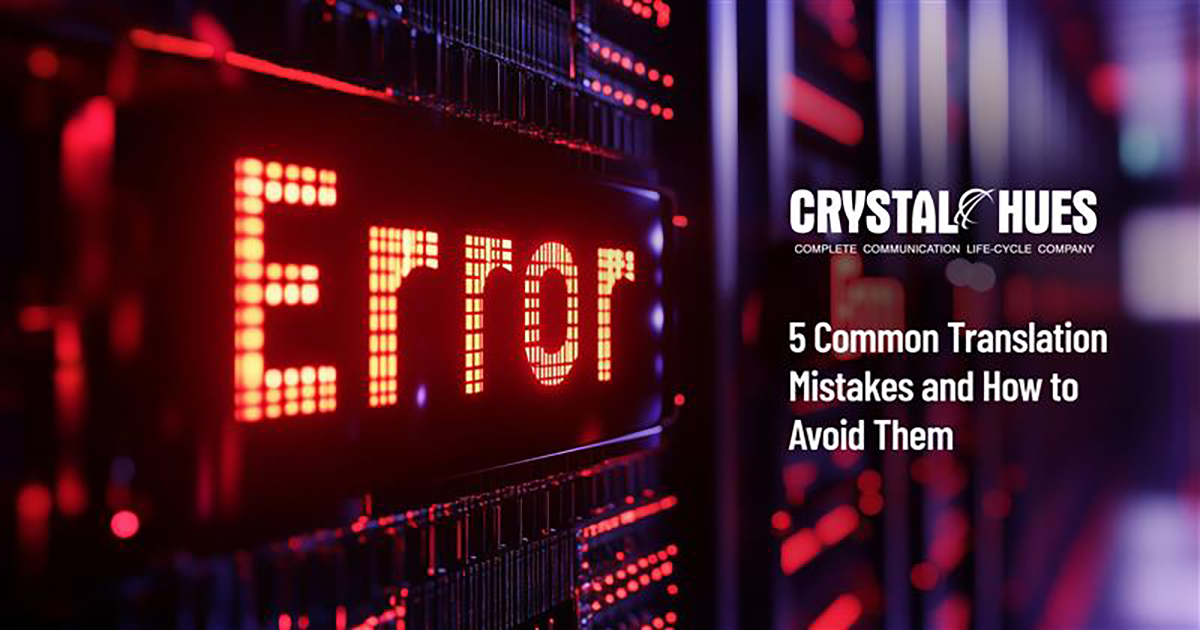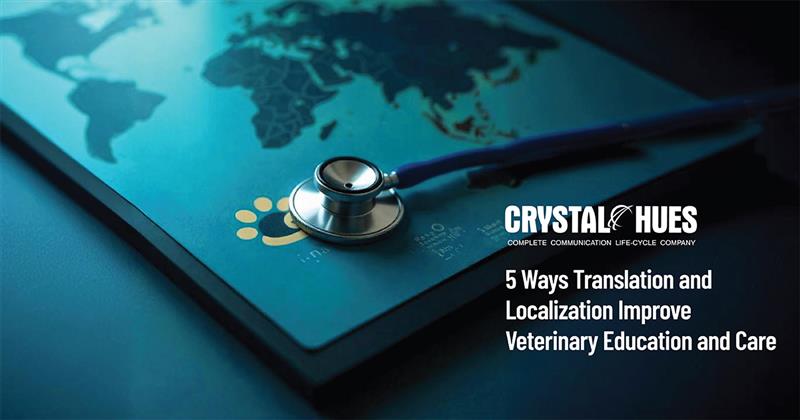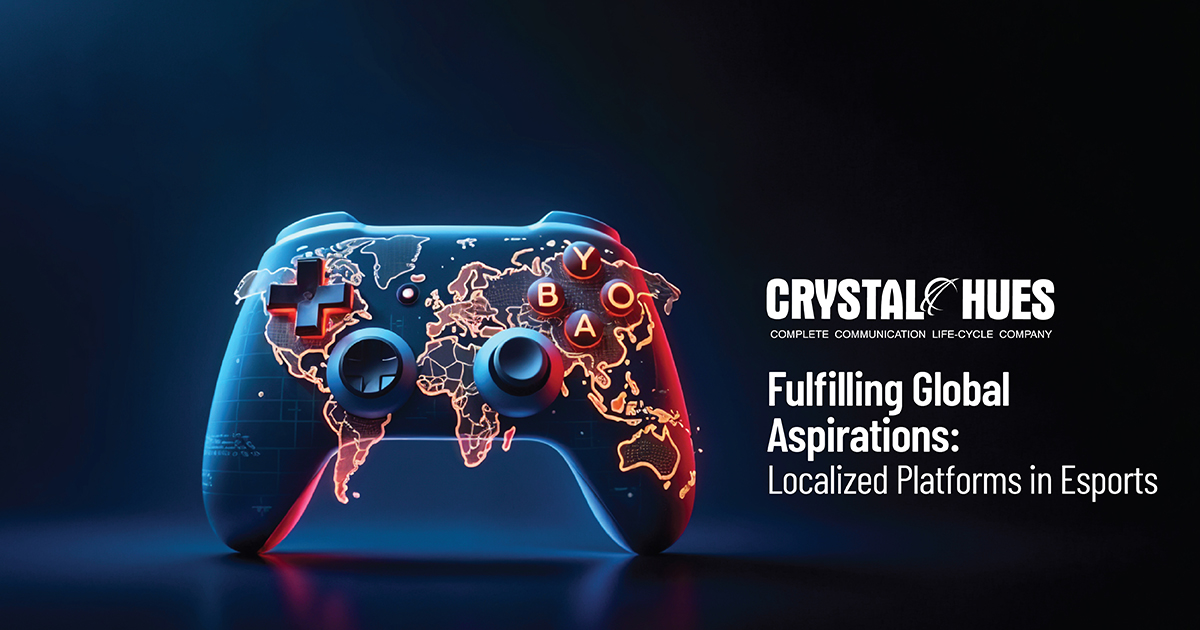
The Future of Localization: 7 Trends Shaping Global Engagement in 2025
Localization is where the real magic of globalization can be found. AI hyper-personalization and a renewed emphasis on ethics are driving a seismic shift in the localization industry as 2025 draws near.
This article delves deeply into the trends that are revolutionizing the way brands interact with audiences around the world and how Crystal Hues can support your journey.
1. A Rise in Context-Aware Translation with AI and LLMs
Artificial Intelligence (AI) and Large Language Models (LLMs) are transforming translation processes and are no longer just trendy terms. Instead of using isolated sentences, LLMs such as GPT-4o and LARA (a hybrid AI model) now analyze entire documents to produce context-rich culturally nuanced translations in contrast to traditional machine translation.
What is the significance of this?
Workflows are faster: Automate translations in bulk while maintaining intent and tone.
Cultural adaptation: LLMs can use regional vernacular (For example: modifying product descriptions from a fashion retailer using Gen Z lingo).
Human-AI synergy: At Crystal Hues Limited, we ensure translations are accurate and emotionally impactful by fusing the power of AI with the cultural knowledge of human linguists.
2. Hyper-Personalization: Going Beyond One-Size-Fits-All
The modern consumer expects content that is customized to suit their individual tastes. Hyper-personalization incorporates everything from local holidays and dietary practices to regional customs into marketing campaigns, going beyond language.
For example: To reflect cultural quirks, streaming services like Netflix employ dubbing and subtitles that are specific to a given region.
Fitness applications modify meal plans in response to regional dietary patterns (For example: Scandinavian plant-based diets compared to India's spice-focused cuisines.
3. Localization of Multimedia: The Revolution of Voice and Video
While voice technology continues to grow, video will make up 82% of all internet traffic. Changing tone dialects and cultural allusions is just as important as adding subtitles when localizing multimedia.
Artificial intelligence (AI) dubbing: AI-powered dubbing synchronizes emotions and lip movements in real time.
Voice interfaces: Regional accents are now recognized by voice assistants (e.g. The Southern Drawl of Southern U.S, or Mumbai’s Bambaiya Hindi).
Fun Fact: By collaborating with a localized tutorial platform that uses regional dialects, we were able to increase engagement in Southeast Asia by 40%.
4. Sustainability and Localization Ethics
Customers are favoring brands that share their values more and more. While ethical practices guarantee that content avoids stereotypes, sustainable localization reduces environmental impact through regional production hubs and eco-friendly packaging.
Key initiatives:
Sustainable workflows: maximizing file sharing to lower carbon emissions.
Using inclusive design means making sure that the content reflects a range of identities and complies with WCAG accessibility guidelines.
5. The Uncharted Territory of Emerging Markets
Growth hotspots include Africa, Latin America and Southeast Asia.
Translation is not enough to succeed here. Knowledge of regional payment systems, preferred devices and cultural taboos is also necessary.
Example: To modify product listings for 700+ dialects in Indonesia, e-commerce behemoths like Alibaba employ hybrid AI models.
Agile workflows make it possible to quickly adapt to changing market trends.
At CHL, we create campaigns that feel truly local by combining market research with local cultural consultants.
6. AI + Human: The Co-Pilot Concept
AI empowers people rather than replaces them.
Linguists can concentrate on creativity and subtlety while AI is used to identify UI translation errors early.
Our philosophy:
AI can translate 10000 product descriptions in a single day.
To avoid robotic outputs, humans refine brand voice metaphors and humor.
7. ISO 5060 is the New Quality Standard
The ISO 5060 standard now assesses translations not only for process compliance but also for accuracy style and cultural appropriateness considering the proliferation of AI-generated content on the web.
How we follow the rules:
Thorough human evaluations for industries with significant stakes (For example: law, medical).
Real-time error detection with automated QA tools.
In conclusion, connections will be key to localization in 2025.
The future lies in creating experiences that have emotional and cultural resonance rather than merely translating words. To help brands prosper in this new era, we at Crystal Hues Limited combine state-of-the-art AI with profound cultural intelligence. How are you adapting your approach?




